Britain is internationally famous for its picturesque beaches and shores, and much of its beauty can be attributed to its striking coastline. Along the British coast you will find a range of dramatic rock formations, including hidden sea caves, arches and stacks.
Extreme weather and coastal erosion cause these impressive landforms and features to form over time, with many of the UK’s impressive coastal structures formed hundreds of years ago.
From Durdle Door in Dorset to the incredible Fingal's cave in Scotland, and the Green Bridge of Wales - here is our guide to the most stunning caves, arches and stacks found around the UK coastline.
How do coastal caves, arches and stacks form?
The destructive force of the lapping waves causes erosion on the headland. When waves find their way into cracks in a cliff erosion is concentrated there, gouging out holes to form caves.
Eventually, the water will erode right through the other side of the rock to create an arch, and in time the top of the arch will collapse under attack from waves and weather.

This will form a stack, a tower of rock separated from the main headland. Later on, erosion will continue to cause the stack to collapse, leaving just a lump of rock at the bottom as an isolated stump.
Best Caves around Britain
Fingal’s Cave, Staffa, Inner Hebrides

Tucked away on the island of Staffa off the west coast of Scotland, Fingal’s Cave is filled with impressive basalt columns. This combined with its striking chamber-like interior leaves visitors awe-struck. The cave has been influential in many works of art, from paintings by Turner to an early Pink Floyd song.
Merlin’s Cave, Tintagel, Cornwall
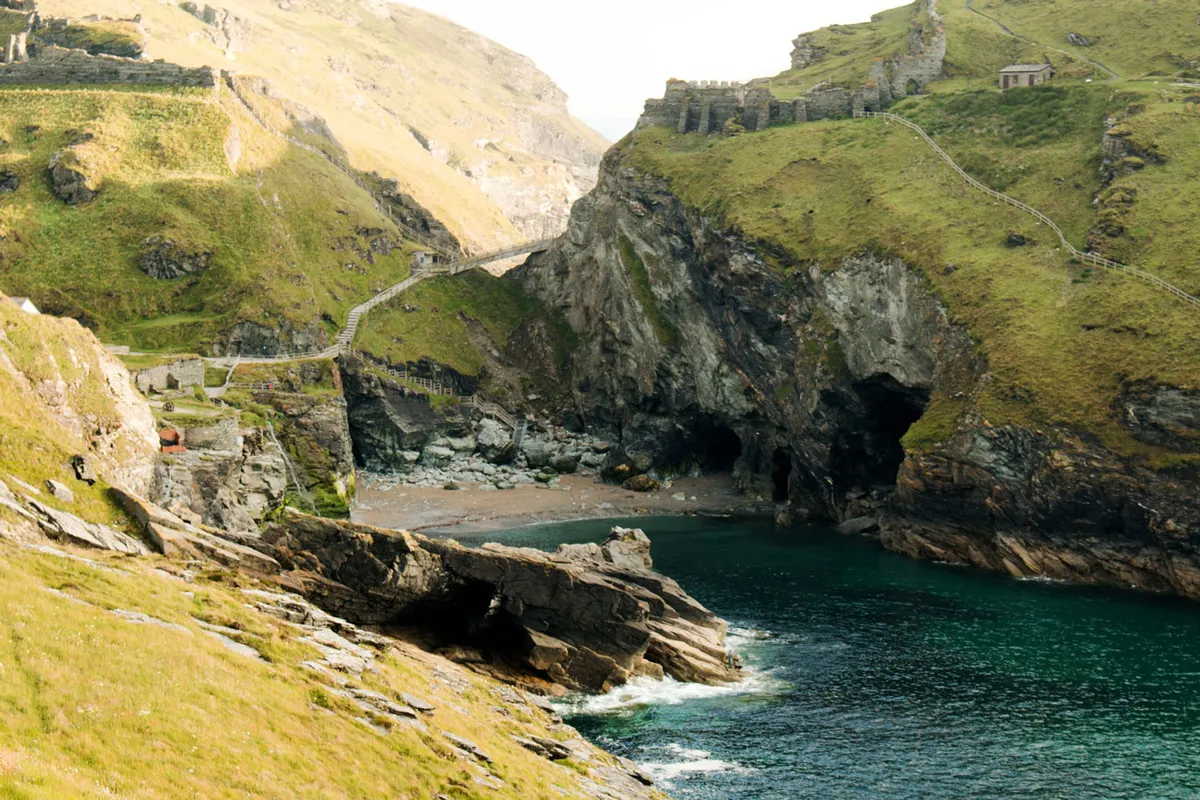
Made famous by Tennyson’s Arthurian poem ‘Idylls of the King’, Merlin’s Cave has long been a location of legend. It’s positioned beneath Tintagel castle, which sits on top of the cliff, and although full at high tide it’s possible to explore the cave when the tide’s out.
Seven Sisters Caves, Broadstairs, Kent
This small network of caves is located between Botany Bay and Kingsgate Bay. They’re most famous for their connection to notorious smuggler Joss Snelling, who used to hide his goods in them. Other interesting landforms include an arch and a stack, and of course the white chalk cliffs.
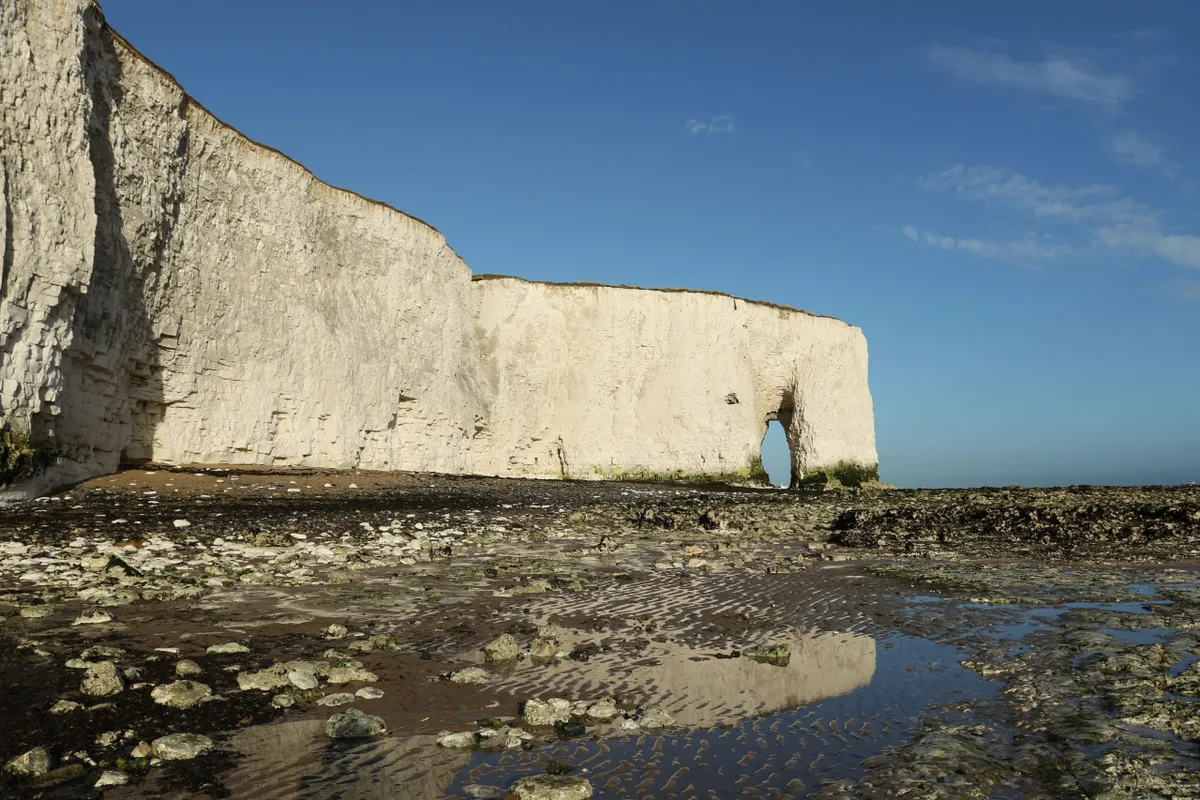
Best Arches around Britain
Black Church Rock, North Devon
One mile to the east of Brownsham car park on Devon’s jagged north coast lies this towering, pyramidal formation, rising like a battle-scarred shark fin from the shallows of the Atlantic Ocean. Clamber across wave-sculpted boulders and explore its slanted archways and fissures up close, or absorb the rock from the comfort of the South West Coast Path high on the clifftop.
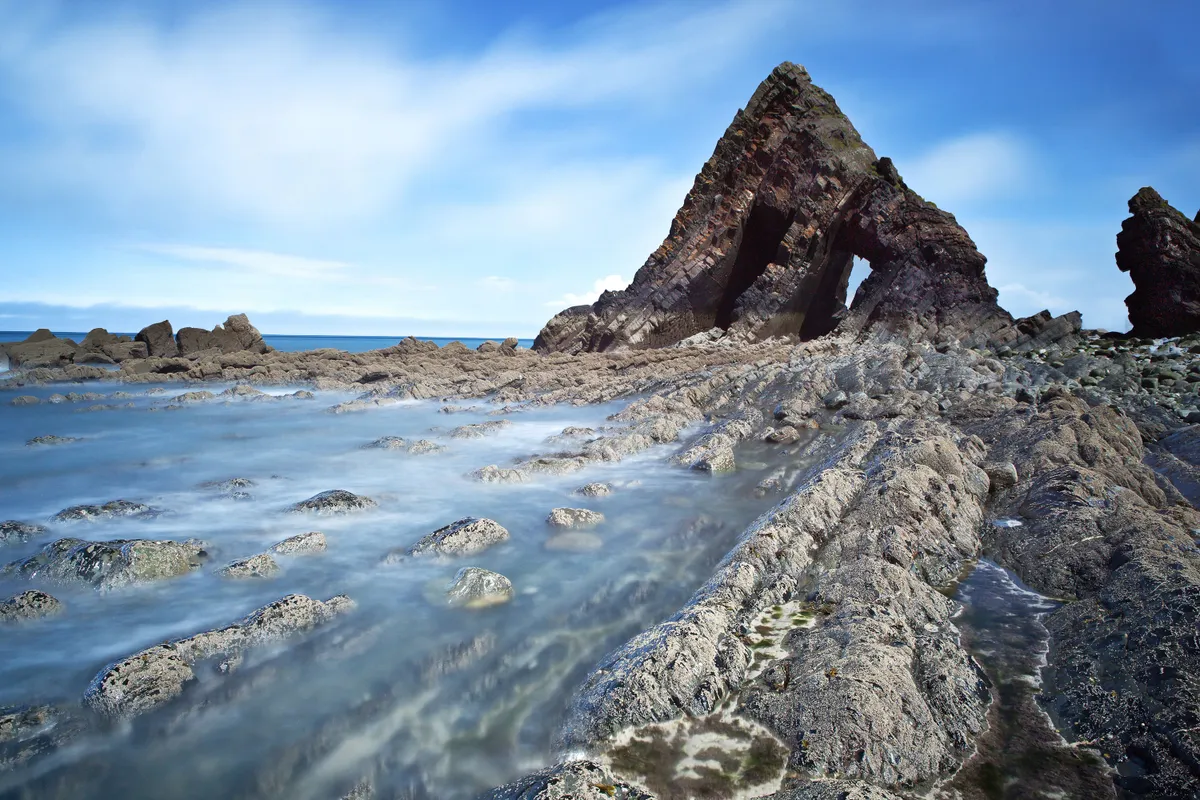
Durdle Door, Dorset
The famous Durdle Door arch was formed by the erosion of the limestone deposits by wave action. The rocks at the bottom of the protrusion are softer than those above and to the side, and were eroded faster, hence the shape; one day the top of the arch will collapse into the sea.
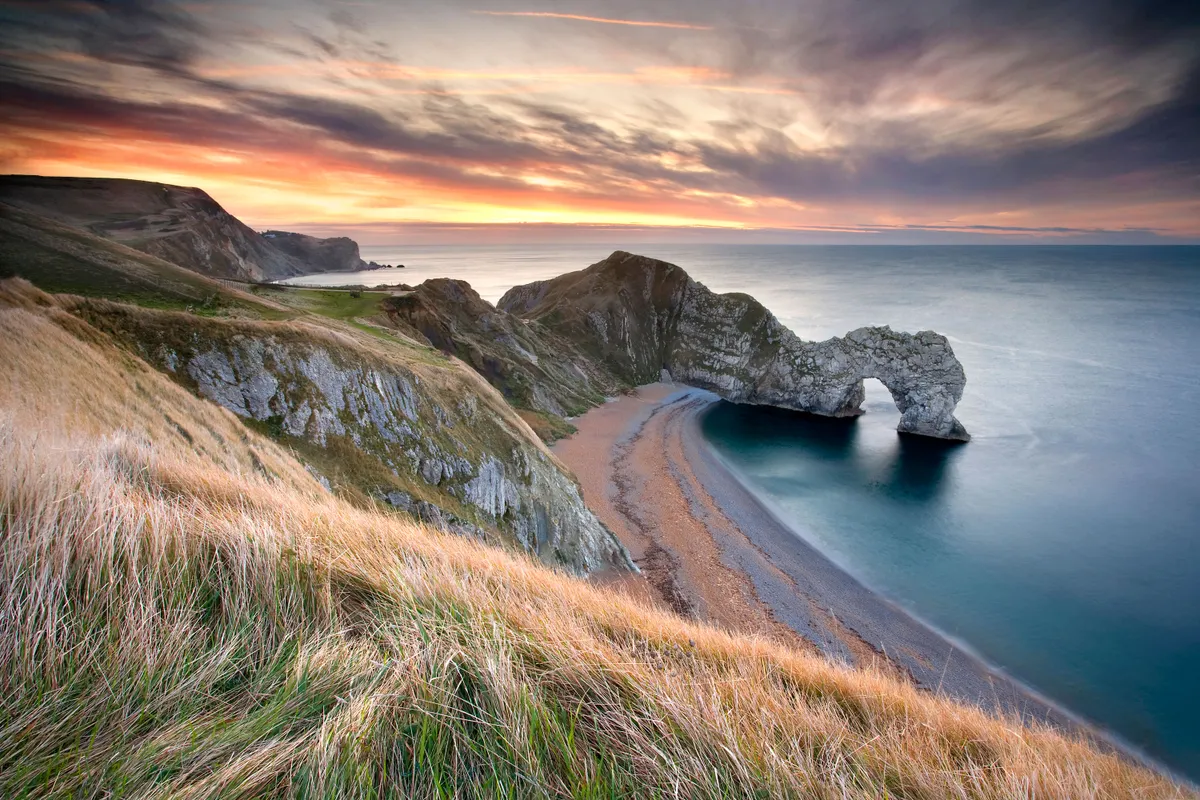
Why Durdle Door called Durdle Door?
This popular Dorset landmark is located on the Jurassic Coast. The name 'Durdle' is thought to originate from the old English word 'thirl' which was used in the 12th century and means to drill, bore or pierce.
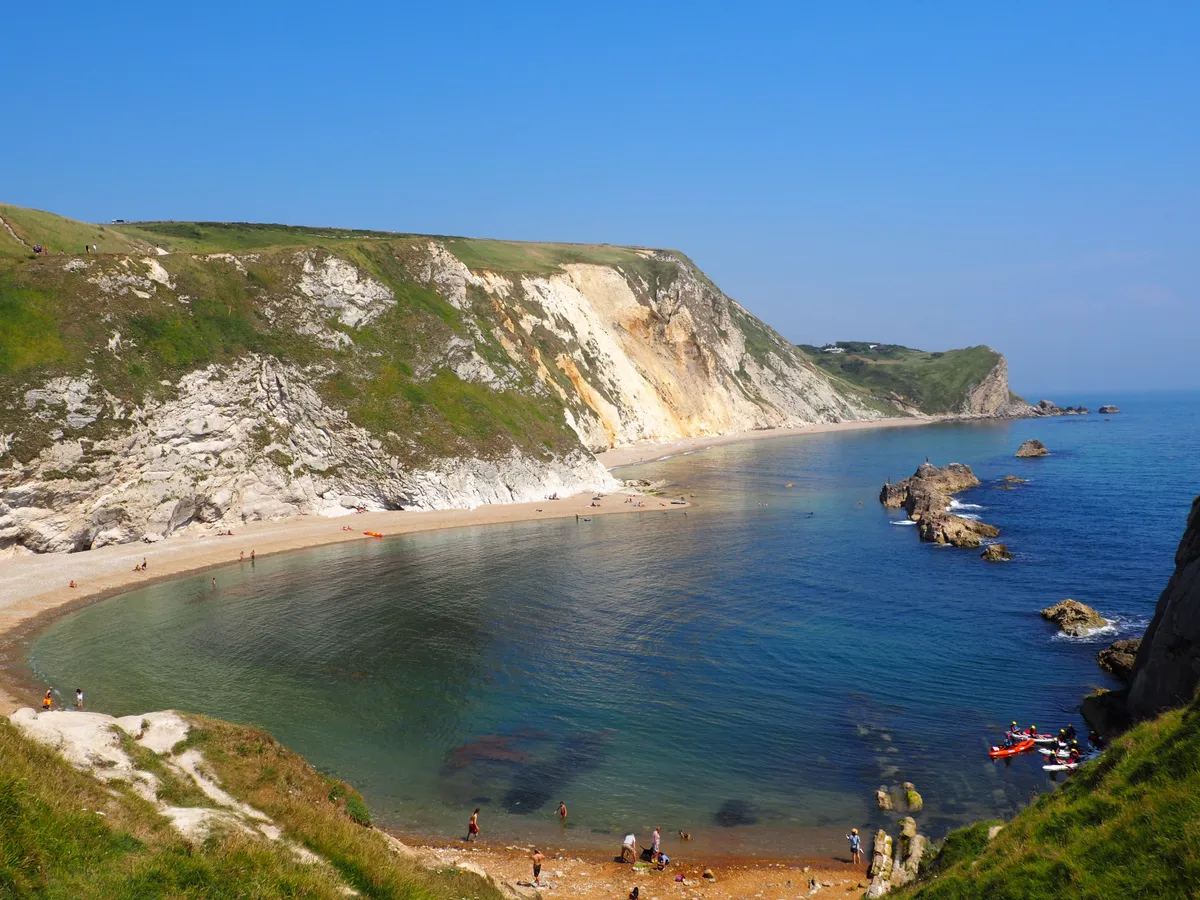
Can you swim through Durdle Door?
Lulworth Cove is a lovely place to swim, and it is possible to swim through Durdle Door, but take care of tides and currents.
Green Bridge of Wales, Castlemartin, Pembrokeshire

This rugged limestone arch juts out magnificently into the Celtic sea and is the most famous of Welsh arches. It’s surrounded by Stack Rocks, an impressive collection of stacks and stumps connected underwater to the main headland.
Beachcombing guide: things to find along the seashore and best beaches in the UK
Extraordinary and beautiful treasures can be found along the British coastline.
Beaches can be very specific in what they collect, due to currents, geography and offshore habitats. Some beaches are good for driftwood, others for mermaid’s purses.
Green Stacks Pinnacle, Flamborough Head, East Yorkshire

Green Stacks Pinnacle is a rocky mound tenuously connected to the headland and boasting a number of impressive features. Perhaps the most eye-catching is its tall narrow arch, making an elegant and surprisingly symmetrical window out to sea.
Bwa Gwyn, Anglesey, North Wales
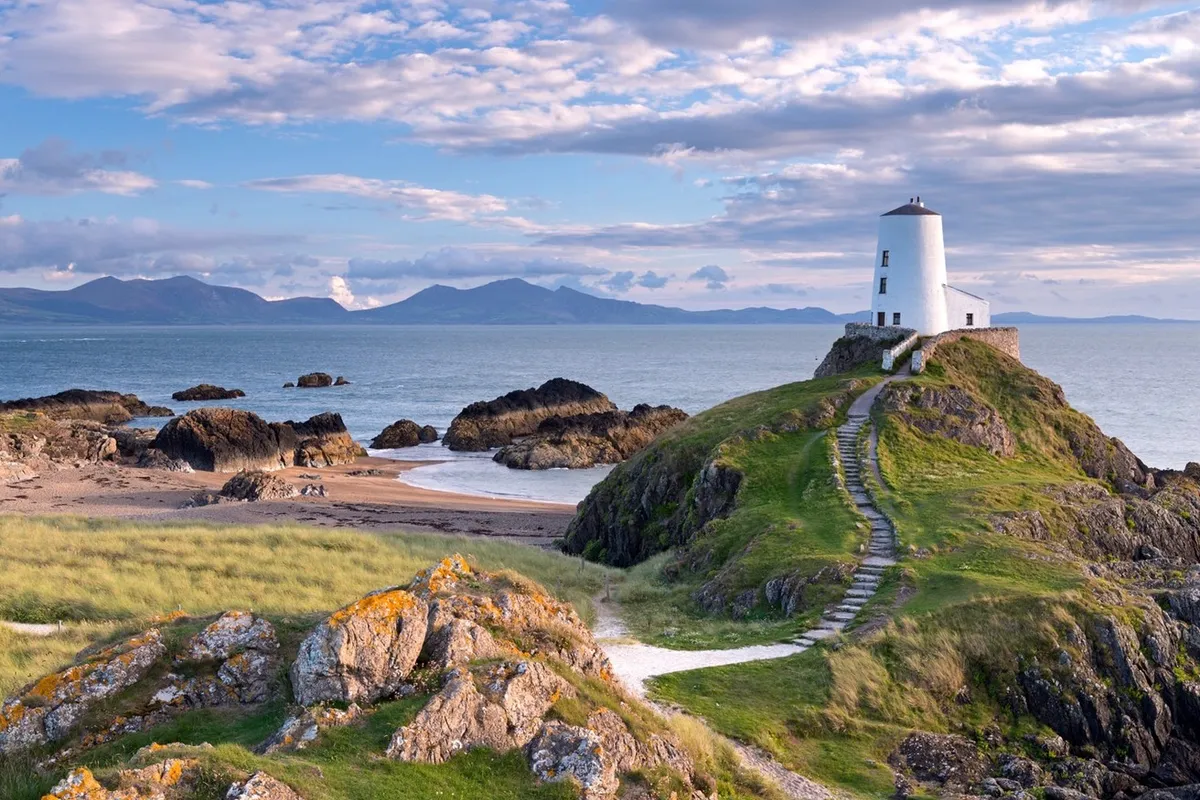
This low-hanging arch has formed in an outcrop of white quartzitic rock. In the past, china clay was quarried from the top of the rock and it’s still possible to see the grindstone used to extract it on top of the rock. A beautiful climb across the cliff tops, but beware of the steep and unstable cliffs.
Best Stacks around Britain
Am Buachaille, Sandwood Bay, Scotland
A few miles north on Kinlochbervie in Scotland’s remote north-west stands the lonely Am Buachaille sea stack. Composed of Torridonian Sandstone, the 65-metre-high rock is best viewed form the shores of Sandwood Bay, one mile to the north. Adventurers can watch the sunset behind the stack then walk a mile or so inland for a night at Strathchailleach bothy.
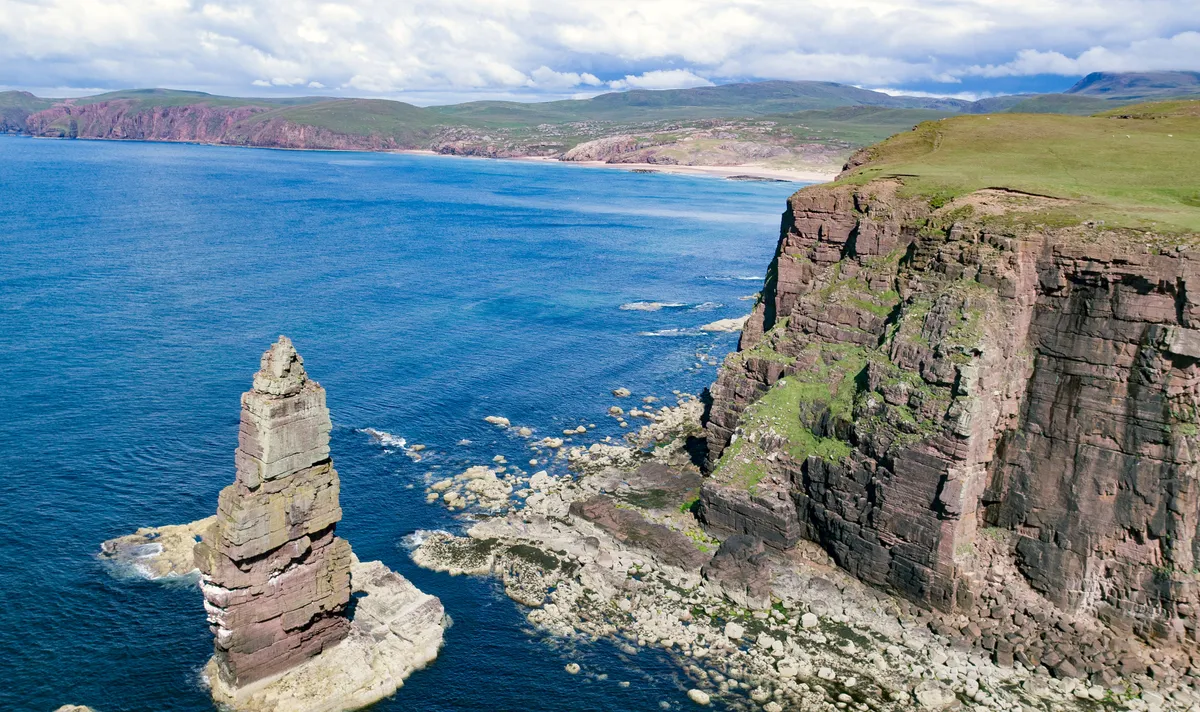
Stacks of Duncansby, Scotland
Wave-raked and wind-battered, the dramatic sea stacks of Dunscansby march upon the north-east coast of Scotland like marauding Vikings. Bands of Old Red Sandstone striate the magnificent pillars, offering natural nesting shelves for seabirds, such as guillemots, razorbills, kittiwakes and puffins.

Maiden Stack, Papa Stour, Shetland Islands

Papa Stour may be tiny but it’s home to one of the most impressive collections of coastal features in Britain. Maiden Stack is the island’s tallest sea stack, named after the daughter of a Norwegian Lord supposedly imprisoned there for refusing an arranged marriage. The Holl O’ Boardie cave, one of the longest in the world, can also be found on Papa Stour.
Old Harry Rocks, Studland, Dorset
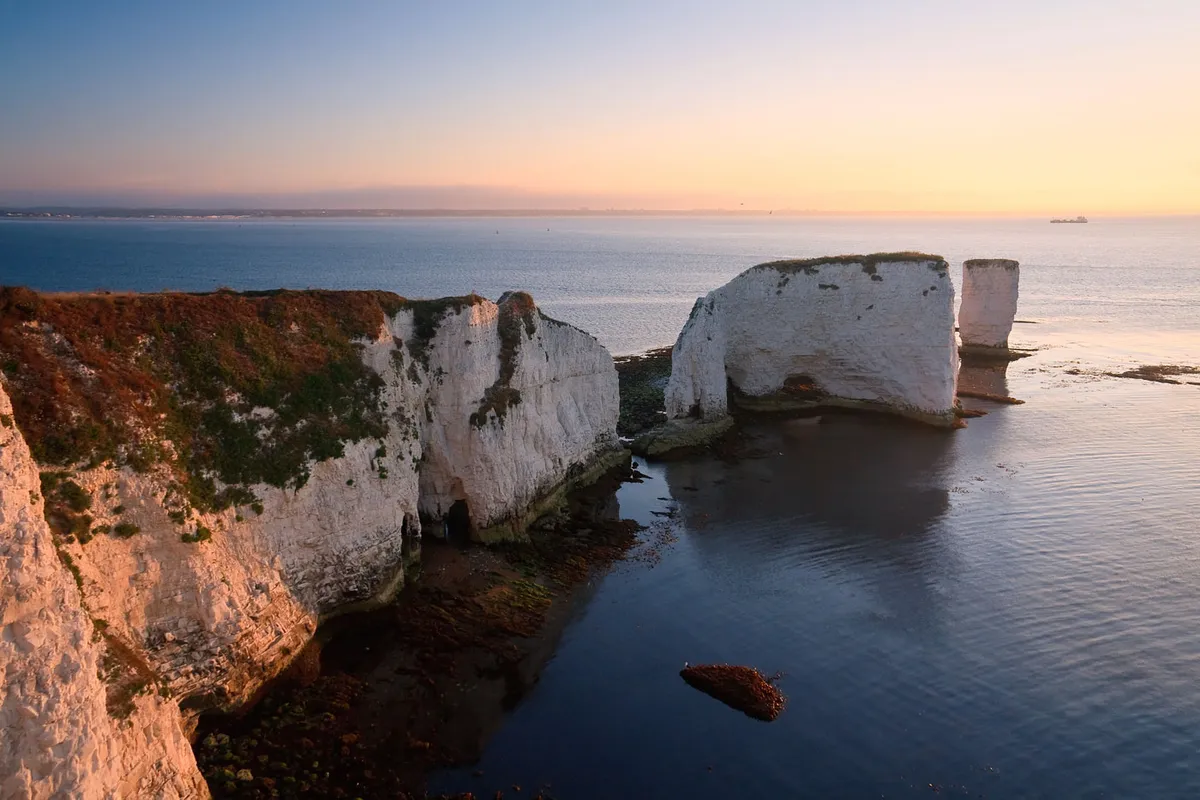
These three chalk formations have been affectionately named as Old Harry, Old Harry’s Wife, and No-Man’s Land - which stands slightly further out than the other two. Differing legends suggest the rocks are either named after the devil (nicknamed Old Harry) who is supposed to have slept there, or local pirate Harry Paye.
Marsden Rock, Marsden Bay, Tyne and Wear
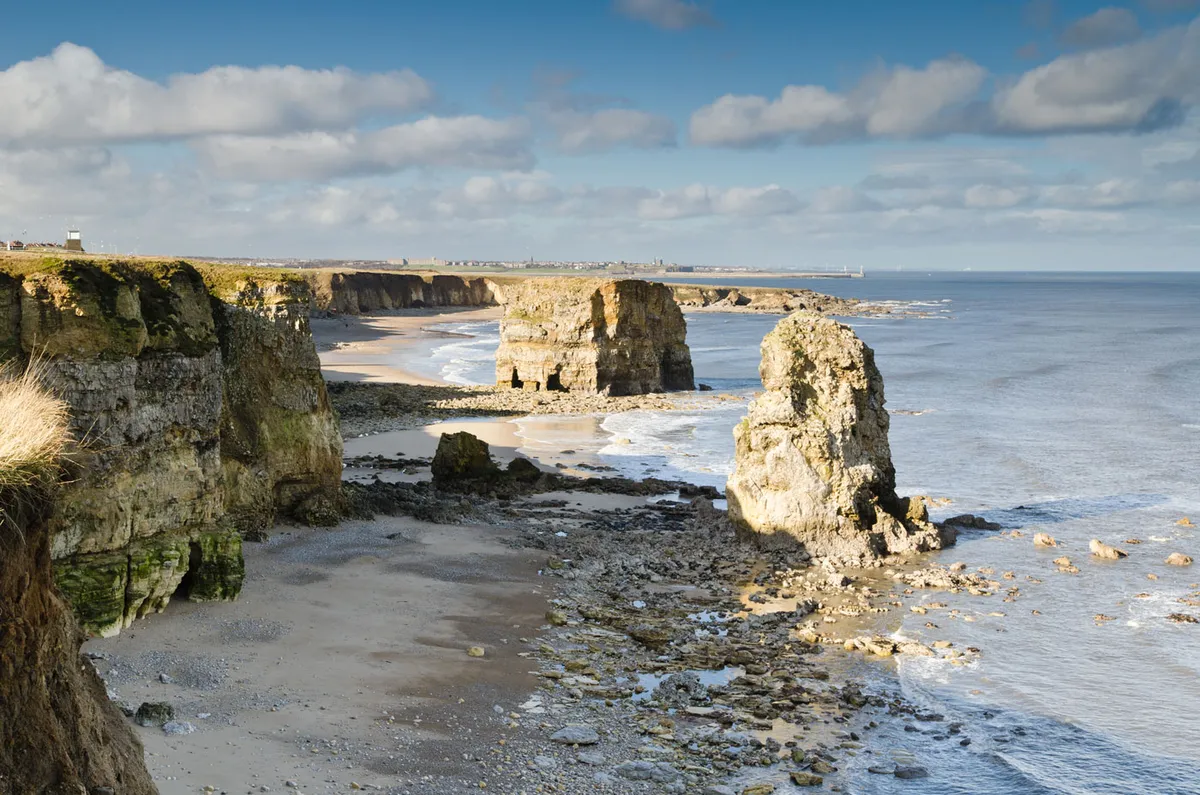
A famous arch which collapsed in 1996, Marsden Rock remains an impressive low-rising stack. At low tide it’s reachable on foot but is entirely surrounded at high tide. If you fancy a drink, head to the top of the cliffs where you’ll find Marsden Grotto, one of the world’s few cave bars.
